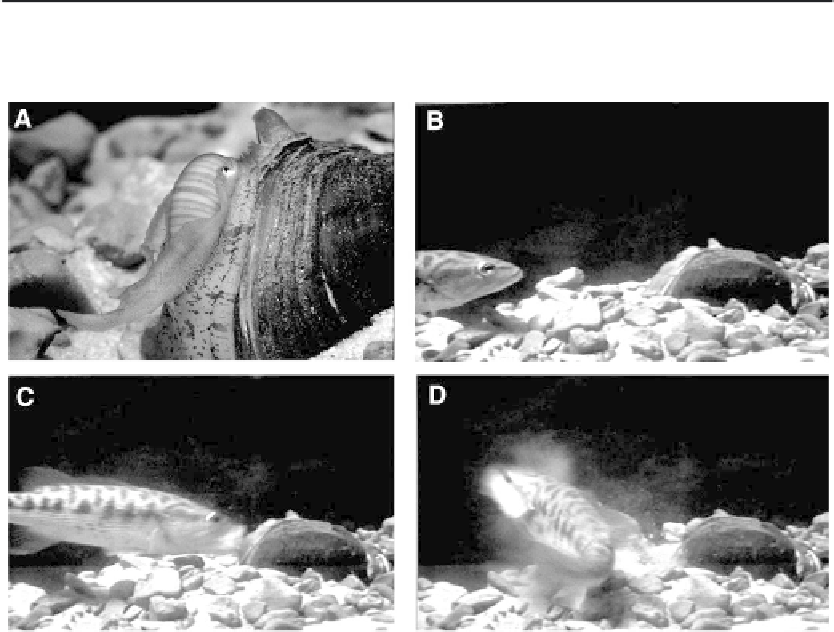Environmental Engineering Reference
In-Depth Information
TABLE 9.1
Community, Food Web, and Ecosystem-Level Effects of the Zebra Mussel,
Dreissena polymorpha
Effect
Citation
Lower phytoplankton biomass, greater water clarity
Makarewicz
et al.
(1999), Holland
et al.
(1995),
Fahnenstiel
et al.
(1995a), Heath
et al.
(1995)
Decreased dissolved oxygen from mussel metabolism
Effler
et al.
(1998), Caraco
et al.,
(2000)
New food source for waterfowl; effective conduit for
Mazak
et al.
(1997)
biomagnification of organic toxicants
Increased variability in phytoplankton biomass and
Mellina
et al.
(1995)
phosphorus concentrations
Increased abundance and depth of macrophytes related to
Skubinna
et al.
(1995)
decreased turbidity
Declines in native unionid bivalves and clams
Nalepa (1994), Strayer
et al.
(1998)
Increases in periphyton biomass and productivity related to
Lowe and Pillsbury (1995), Fahnenstiel
et al.
increased water clarity, about equal to phytoplankton
(1995b)
decreases
Increased numbers of small planktonic heterotrophic
Cotner
et al.
(1995), Findlay
et al.
(1998)
bacteria, decreased numbers of predatory protozoa
Increased nitrogen regeneration rates
Gardner
et al.
(1995), Holland
et al.
(1995)
Decreases in planktonic protozoa
Lavrentyev
et al.
(1995)
Moderate effect on cladoceran grazing rates in open, deep
Wu and Culver (1991)
waters of a large lake
FIGURE 9.8
A red-eye bass
(Micropterus coosae)
“attacking” the lure of a freshwater mus-
sel
(Lampsilis cardium).
(A) View of the gravid gill that serves as a lure. After the fish bites
the mantle (C), the glochidia are released in a cloud, and the fish rapidly leaves (D). The mus-
sel is about 6 cm long (from Haag and Warren, 1999; images courtesy of Wendall Haag).




Search WWH ::

Custom Search